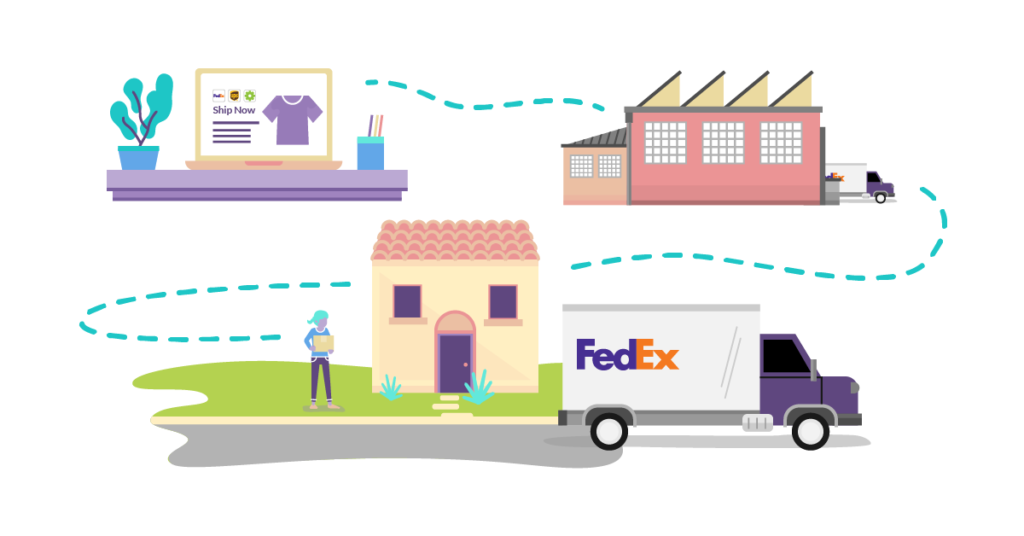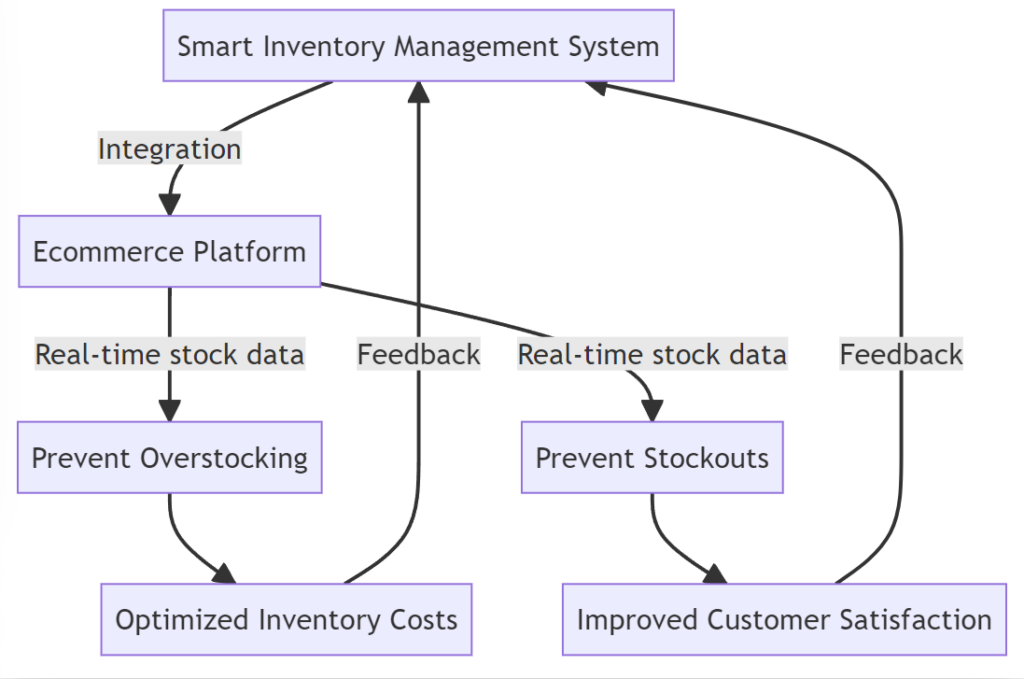
Overview of Ecommerce Shipping
Ecommerce shipping is not merely the exchange of physical products; it’s a crucial touchpoint in the customer’s online shopping experience. A dynamic strategy and a seamless process can propel your business forward, creating lasting relationships with your customers.
The Power of an Effective Ecommerce Shipping Strategy
Ecommerce Shipping: Customer Satisfaction and Loyalty
An efficient shipping strategy goes beyond getting products to your customers. It’s the bridge between the online and offline world, a bridge that can determine customer satisfaction and loyalty.
Ecommerce Shipping: Business Growth and Profitability
The right ecommerce shipping strategy can unlock new markets, reduce operational costs, and improve profitability. It’s not just about packing and shipping; it’s about implementing a comprehensive approach that factors in cost-effectiveness, time management, and logistics efficiency.
Core Elements of an Exceptional Ecommerce Shipping Strategy
Reliable Fulfillment Services
Reliability in order fulfillment means punctuality, accuracy, and consistent service. Your customers trust you to deliver their orders correctly and on time. Engaging a dependable fulfillment service can ensure that every order reaches its destination without hitches.
Transparent Shipping Costs
Transparency in shipping costs is crucial. Be upfront about any additional charges, or better yet, integrate real-time shipping calculators into your ecommerce platform.
Variety of Shipping Options
Offer a range of shipping options to cater to diverse customer needs. Some customers may prioritize speed and be willing to pay extra for express delivery, while others may prefer more cost-effective, standard shipping options. It’s all about providing flexibility and choice.
Hassle-Free Returns
A seamless return process can turn potentially negative experiences into positive ones. Make sure your return policy is easy to understand and implement.
Enhancing Your Ecommerce Shipping Process with Technology
Advanced Ecommerce Shipping Solutions
Leverage technology to optimize your ecommerce shipping. Use advanced shipping platforms that integrate seamlessly with your online store, automatically calculating shipping costs and printing shipping labels.
Real-Time Tracking
Provide real-time tracking options to keep customers informed about their package’s progress. This level of visibility can improve customer experience, increase confidence, and reduce customer service inquiries.
Smart Inventory Management
Implement smart inventory management systems that give you real-time insights into your stock levels and help prevent stockouts and overstocking.

The above diagram illustrates how a smart inventory management system can be integrated with your ecommerce platform to provide real-time stock data, thereby preventing overstocking and stockouts. These factors collectively lead to optimized inventory costs and improved customer satisfaction, which in turn, provide feedback to refine the inventory management system.
Future of Ecommerce Shipping: Sustainability and Beyond
With the ongoing rise in ecommerce, sustainability is increasingly becoming a key concern. More and more businesses are now implementing eco-friendly practices in their shipping process. From recyclable packaging materials to carbon-neutral shipping options, sustainability is the future of ecommerce shipping.
The Ecommerce Shipping Process: An In-depth Exploration

Step 1: Ecommerce Shipping: From Order Placement to Confirmation
The ecommerce shipping process begins when a customer places an order through your online store. Upon order placement, an automatic order confirmation is sent to the customer, detailing the purchased items, total cost, shipping details, and estimated delivery time.
Step 2: Order Processing
The order information is sent to the warehouse or fulfillment center where the products are stored. Warehouse staff identify the ordered products and pick them from the storage racks.
Step 3: Packaging
The selected items are then securely packaged to ensure they can withstand the rigors of the journey ahead. The type of packaging used may vary depending on the product’s nature – fragile items might require bubble wrap or padding, while clothing could be packed in branded poly mailers.
Step 4: Labeling and Dispatch
Each package is labeled with a shipping label, which includes critical information such as the sender’s and recipient’s addresses, package weight, and a tracking number. The packages are then collected by the shipping carrier for dispatch.
Step 5: Delivery
The final step is the delivery of the package to the customer’s designated address. The shipping carrier ensures that the package is safely delivered and captures the recipient’s acknowledgment.
Step 6: Returns and Refunds
After delivery, the customer may decide to return the product based on the return policy. In such cases, the reverse logistics process kicks in, where the customer sends back the product, and upon receipt and inspection, a refund or exchange is processed.
US Ecommerce Shipping Carriers: An Exhaustive Guide
Ecommerce businesses have several shipping carriers to choose from in the US. Each has its unique strengths and features that cater to different shipping needs.
1: United States Postal Service (USPS)
USPS is a government-run entity that offers a range of affordable services. Its reach extends to all US addresses, including P.O. boxes and remote areas. Some popular USPS ecommerce shipping services include First Class Mail for lightweight packages, Priority Mail for quick domestic deliveries, and Media Mail for educational materials.
2: United Parcel Service (UPS)
UPS is renowned for its comprehensive domestic and international services and robust tracking system. UPS offers numerous shipping services like UPS Ground, UPS 2nd Day Air, and UPS Next Day Air. It also provides a range of solutions for ecommerce businesses, such as UPS Access Point network, which allows customers to pick up their packages from secure and convenient locations.
3: FedEx
FedEx is popular for its overnight shipping service and real-time tracking system. Key services include FedEx Ground, FedEx 2Day, and FedEx Overnight. FedEx also offers services tailored for ecommerce, like FedEx Home Delivery that caters to residential customers, and FedEx SmartPost, a cost-effective service for low-weight packages.
4: DHL eCommerce
DHL eCommerce is a division of DHL specifically designed for ecommerce shipping. It provides affordable domestic and international services, making it an excellent choice for businesses looking to expand globally.
UK Ecommerce Shipping Carriers: An In-depth Examination
Shipping is a critical part of ecommerce operations. Each carrier offers unique services tailored to various shipping needs.
1: Royal Mail
Royal Mail is the UK’s state-owned postal service and one of the most popular choices for ecommerce businesses due to its extensive network and affordable rates. It offers services like Royal Mail 1st Class for quick deliveries and Royal Mail 2nd Class for cost-effective shipping.
2: ParcelForce Worldwide
ParcelForce, a courier company owned by Royal Mail Group, specializes in express and international courier services. Its offerings, such as express48 and express24, cater to businesses seeking quick domestic deliveries, while its globalpriority and globalexpress services are suitable for international shipping.
3: DPD Local and DPD UK
DPD Local and DPD UK, parts of the international DPDgroup network, offer robust ecommerce shipping services. Their Next Day service ensures swift domestic deliveries, and their comprehensive tracking system enhances package visibility for businesses and consumers alike.
4: Hermes
Hermes offers a range of cost-effective services suitable for ecommerce businesses, including next-day and standard parcel delivery. The company also provides a parcel shop service, where customers can drop off and pick up parcels at convenient locations, offering greater flexibility for deliveries and returns.
5: UPS
UPS, though a US-based company, has a strong presence in the UK market. It provides various domestic and international shipping services, alongside solutions like UPS Access Point, which enables convenient package pick-up and drop-off at local businesses.
Determining the Best Carrier for Your Ecommerce Needs
Delivery Reach
Assess the geographical reach of the carrier. While Royal Mail and ParcelForce can deliver to all UK postcodes, other carriers might offer broader international coverage.
Cost
Compare the costs of different carriers, considering the weight, size, and destination of your typical shipments.
Delivery Speed
If quick delivery is essential for your business, opt for carriers like ParcelForce or DPD that offer express services.
Reliability
Evaluate the carrier’s reliability based on factors such as on-time delivery rates and customer reviews.
Tracking Capabilities
Real-time tracking provides visibility into the shipment’s status, improving the customer experience. All major carriers offer tracking services, but their comprehensiveness may vary.
Customer Service
Efficient customer service is crucial to resolve potential shipping issues promptly. In general, private carriers tend to have more responsive customer service teams.
Managing Multiple Carriers
It can be advantageous for ecommerce businesses to use multiple carriers. This flexibility allows you to choose the most suitable carrier for each shipment based on cost, delivery speed, and destination. Multi-carrier shipping software can streamline this process by offering integrated rate comparison, tracking, and label printing.

In conclusion, ecommerce shipping is an integral part of the online shopping experience. A well-crafted strategy can drive customer satisfaction, loyalty, and business profitability. By incorporating reliable fulfillment services, transparent shipping costs, a variety of shipping options, hassle-free returns, and leveraging technology, you can create a robust ecommerce shipping strategy.